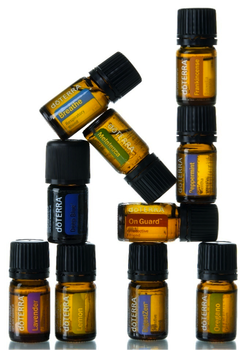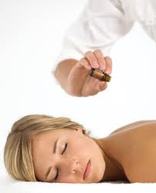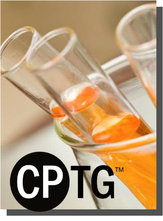What are Essential Oils anyways??
Essential oils are natural aromatic compounds found in the seeds, bark, stems, roots, flowers and other parts of plants. They can be both beautifully and powerfully fragrant. If you have ever enjoyed the gift of a rose, a walk by a field of lavender or the smell of fresh cut mint, you have experienced the aromatic qualities of essential oils. In addition to giving plants their distinctive smells, essential oils provide plants with protection against predators and disease and play a role in plant pollination.
Essential oils are non water-based phytochemicals made up of volatile organic compounds. Although they are fat soluble, they do not include fatty lipids or acids found in vegetable and animal oils. Essential oils are very clean, almost crisp, to the touch and are immediately absorbed by the skin. Pure, unadulterated essential oils are translucent and range in color from crystal clear to deep blue.
Try this at home: Squeeze the peel of a ripe orange. The fragrant residue on your hand is full of essential oils.
In addition to their intrinsic benefits to plants and being beautifully fragrant to people, essential oils have been used throughout history in many cultures for their medicinal and therapeutic benefits. Modern scientific study and trends towards more holistic approaches to wellness are driving a revival and new discovery of essential oil health applications.
dōTERRA (CPTG) Certified Pure Therapeutic Grade® essential oils represent the safest, purest and most beneficial essential oils available today. They are gently and skillfully distilled from plants that have been patiently harvested at the perfect moment by experienced growers from around the world for ideal extract composition and efficacy. Experienced essential oil users will immediately recognize dōTERRA's superior quality standard for naturally safe, purely effective therapeutic-grade essential oils.
Essential oils are non water-based phytochemicals made up of volatile organic compounds. Although they are fat soluble, they do not include fatty lipids or acids found in vegetable and animal oils. Essential oils are very clean, almost crisp, to the touch and are immediately absorbed by the skin. Pure, unadulterated essential oils are translucent and range in color from crystal clear to deep blue.
Try this at home: Squeeze the peel of a ripe orange. The fragrant residue on your hand is full of essential oils.
In addition to their intrinsic benefits to plants and being beautifully fragrant to people, essential oils have been used throughout history in many cultures for their medicinal and therapeutic benefits. Modern scientific study and trends towards more holistic approaches to wellness are driving a revival and new discovery of essential oil health applications.
dōTERRA (CPTG) Certified Pure Therapeutic Grade® essential oils represent the safest, purest and most beneficial essential oils available today. They are gently and skillfully distilled from plants that have been patiently harvested at the perfect moment by experienced growers from around the world for ideal extract composition and efficacy. Experienced essential oil users will immediately recognize dōTERRA's superior quality standard for naturally safe, purely effective therapeutic-grade essential oils.
History of Essential Oils

Essential oils have been used throughout recorded history for a wide variety of wellness applications. The Egyptians were some of the first people to use aromatic essential oils extensively in medical practice, beauty treatment, food preparation and in religious ceremony. Frankincense, sandalwood, myrrh and cinnamon were considered very valuable cargo along caravan trade routes and were sometimes exchanged for gold!
Borrowing from the Egyptians, the Greeks used essential oils in their practices of therapeutic massage and aromatherapy. The Romans also used aromatic oils to promote health and personal hygiene. Influenced by the Greeks and Romans, as well as Chinese and Indian Ayurvedic use of aromatic herbs, the Persians began to refine distillation methods for extracting essential oils from aromatic plants. Essential oil extracts were used throughout the dark ages in Europe for their anti-bacterial and fragrant properties.
In modern times, the powerful healing properties of essential oils were rediscovered in 1937 by a French chemist, Rene-Maurice Gattefosse, who healed a badly burnt hand with pure lavender oil. A French contemporary, Dr. Jean Valnet, used therapeutic-grade essential oils to successfully treat injured soldiers during World War II. Dr. Valnet went on to become a world leader in the development of aromatherapy practices. The modern use of essential oils has continued to grow rapidly as health scientists and medical practitioners continue to research and validate the numerous health and wellness benefits of therapeutic-grade essential oils.
Borrowing from the Egyptians, the Greeks used essential oils in their practices of therapeutic massage and aromatherapy. The Romans also used aromatic oils to promote health and personal hygiene. Influenced by the Greeks and Romans, as well as Chinese and Indian Ayurvedic use of aromatic herbs, the Persians began to refine distillation methods for extracting essential oils from aromatic plants. Essential oil extracts were used throughout the dark ages in Europe for their anti-bacterial and fragrant properties.
In modern times, the powerful healing properties of essential oils were rediscovered in 1937 by a French chemist, Rene-Maurice Gattefosse, who healed a badly burnt hand with pure lavender oil. A French contemporary, Dr. Jean Valnet, used therapeutic-grade essential oils to successfully treat injured soldiers during World War II. Dr. Valnet went on to become a world leader in the development of aromatherapy practices. The modern use of essential oils has continued to grow rapidly as health scientists and medical practitioners continue to research and validate the numerous health and wellness benefits of therapeutic-grade essential oils.


